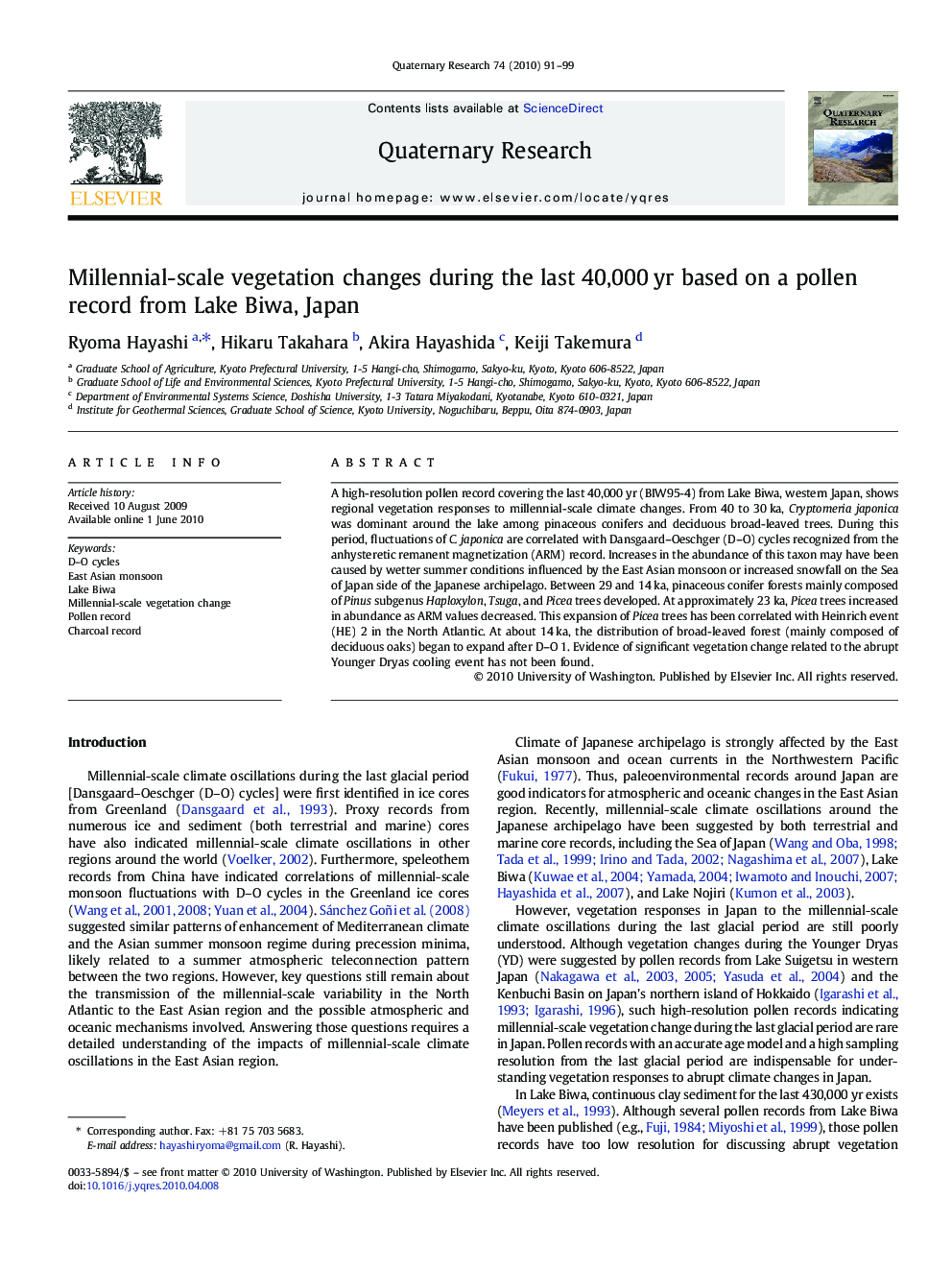| Article ID | Journal | Published Year | Pages | File Type |
|---|---|---|---|---|
| 1045949 | Quaternary Research | 2010 | 9 Pages |
A high-resolution pollen record covering the last 40,000 yr (BIW95-4) from Lake Biwa, western Japan, shows regional vegetation responses to millennial-scale climate changes. From 40 to 30 ka, Cryptomeria japonica was dominant around the lake among pinaceous conifers and deciduous broad-leaved trees. During this period, fluctuations of C.japonica are correlated with Dansgaard–Oeschger (D–O) cycles recognized from the anhysteretic remanent magnetization (ARM) record. Increases in the abundance of this taxon may have been caused by wetter summer conditions influenced by the East Asian monsoon or increased snowfall on the Sea of Japan side of the Japanese archipelago. Between 29 and 14 ka, pinaceous conifer forests mainly composed of Pinus subgenus Haploxylon, Tsuga, and Picea trees developed. At approximately 23 ka, Picea trees increased in abundance as ARM values decreased. This expansion of Picea trees has been correlated with Heinrich event (HE) 2 in the North Atlantic. At about 14 ka, the distribution of broad-leaved forest (mainly composed of deciduous oaks) began to expand after D–O 1. Evidence of significant vegetation change related to the abrupt Younger Dryas cooling event has not been found.
